Andalusia is one of Spain’s largest regions, with a ton of big and small cities. You can spend a month or even more in Andalusia and still have things to do and see. Cities in Andalusia can give you anything from surfing, beach days, to hot days under Moorish landmarks. If you’re planning a trip to Spain, Andalusia is probably in your travel itinerary, and you are looking to create an Andalusia itinerary.
From Seville’s orange-smelling streets in spring to Granada’s snowy peaks in winter, you need to decide what to do and where to stay the most. Bigger cities like Seville, Malaga, or Granada are perfect to take as a base and do day trips from there for your Andalusia trip. Within cities in Andalusia, there are also many lesser-known stops that you shouldn’t miss.
I will divide the cities between major and small ones. Major ones are worth spending a few days (even a week in Seville’s case), but smaller ones could be a one or two-day trip from either of these major cities.
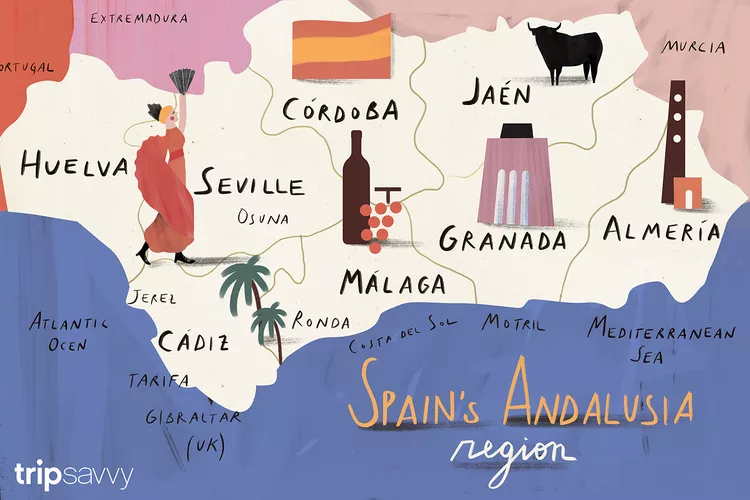
Why is Andalusia Special?
Apart from the great beaches, surfing spots, historical sights, and amazing food and drinks, Andalusia is a region of several cultures. Romans, Moors, and Catholic kings all left some sort of a trace here. You will see later on, but each city, whether small or big, has palaces where several kings and queens lived. There are random patios in random neighborhoods and streets. Plus, Andalusia is Spain’s biggest autonomous region. There are 840 municipalities! The number of cities is unknown because there is no definitive way to measure it. Some lists say that there are 56 cities with a population of at least 25,000. That’s still a lot.
That’s why Andalusia is special; there aren’t many examples of such a region in Europe. It’s an amazing mix of cultures, regions, and cities in one autonomous region in the country. The destinations are also quite short. You can take day trips from Seville for under an hour and be in a totally different culture. The same thing goes for Malaga or Granada. On top of everything, sherry was born in Andalusia, Spain’s special drink.
Best Visit Time to Andalusia
In whichever Andalusia city you go to, it’s good to see the weather and what the season is like during that time. For example, if you go to Cordoba in summer, you won’t be able to go out during the day because it’s mostly 40 degrees Celsius. Seville or Malaga is slightly better, but still bad in summer. Spring and fall are the ideal seasons for each Andalusian city. April’s weather is pure magic. You’ll love strolling Granada’s Alhambra without the shoulder-to-shoulder chaos. September is still warm enough in Costa del Sol or Marbella to hit the water. Plus, it’s cheaper.
Major Cities in Andalusia
As I said, Andalusia has 850 municipalities, and for some, about 56 cities. Most of these municipalities and cities are pretty small, though. Mostly villages. There are very few big cities in Andalusia. Specifically, there are only four cities with a population over 230,000: Seville, Malaga, Granada, and Cordoba, and eight cities with a population over 100,000. This should put things in perspective. That’s why when you are considering your trip to Andalusia, you should pick a major city as your “base.” These cities have much more to see and do, and it is easier to find transportation to smaller cities.
Málaga: Art, Beaches, and Picasso’s Legacy
Málaga is more than beaches and sun. It’s the birthplace of Picasso and has an amazing art culture. It brings all this in one great package. Start with the Alcazaba and Gibralfaro for views of the port, then pick a museum. The Picasso Museum is the classic. Alcazaba was built in the 11th century and has some solid hidden gardens that overlook the Mediterranean. You’ll also find the Roman theatre under it, which has been buried for 1,700 years. The waterfront at Muelle Uno is made for an afternoon walk, and Atarazanas Market is great for juice and snacks. When you want a simple beach day, head to Pedregalejo or El Palo for a plate of fried fish. Málaga links well to other smaller cities by train and bus, so it works as a smart base to do day trips from.
Picasso is so embedded here that most historical spots have some sort of paragraph about Pablo’s journey there. For example, Plaza de la Merced is one of those places where Pablo grew up. If art is your thing, the Soho District is perfect.
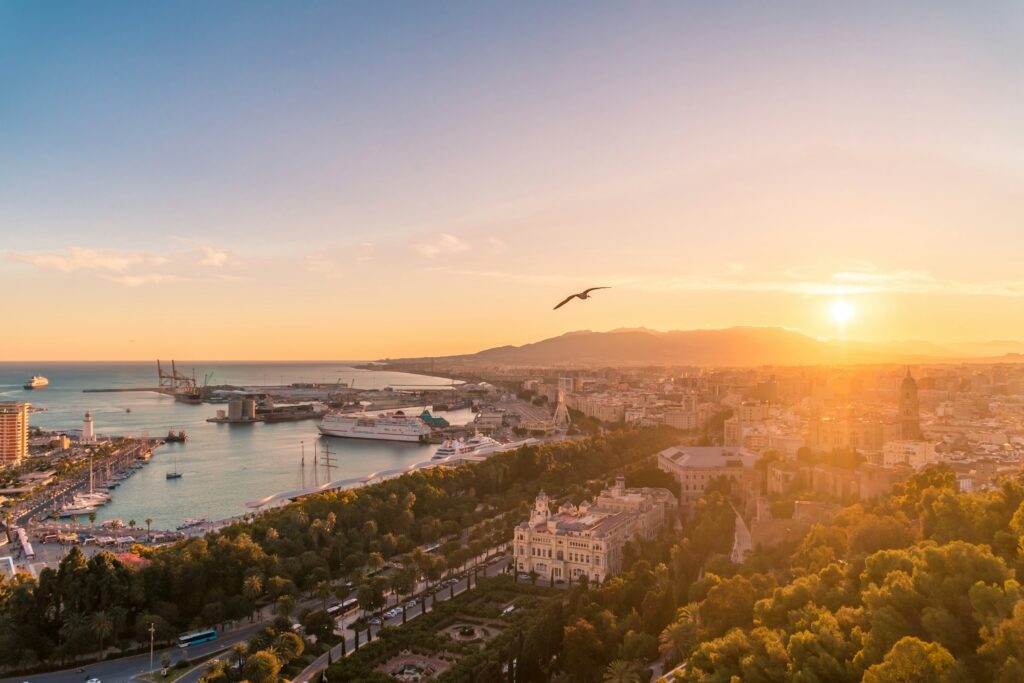
Seville: The Heart of Andalusia
Seville is the real deal. Capital of Andalusia and the biggest city in the region. It’s a city of breathing and living architecture, art, and culture. It’s Andalusia’s cultural capital, not just political. Real Alcazar, Giralda, and Plaza de España are the main highlights. Alcazar is the oldest royal palace in Europe that’s still in use. Of course, it’s also a UNESCO World Heritage Site. Even Game of Thrones used it as a shooting destination. Climb up to Giralda, as well, for great views.
Seville has some great neighborhoods, like Santa Cruz. In each of these, you will find tapas bars and wine bars. Sometimes separate, but sometimes together. Make sure to go to one of these at least once you’re in Seville and grab some tapas. The Triana Neighborhood is famous for ceramics, if it’s your thing. After Triana, circle back to Plaza de España and María Luisa Park for a slow walk. Seville is a strong first stop and a handy base for day trips to other cities in Andalusia, such as Córdoba and Cádiz. Many people use Seville as the base. You can find things to see in this city for up to a week.

Granada: The Alhambra’s Enchantment
You don’t see Granada mentioned as much as Malaga or Seville in Andalusia travel guides. It falls behind the spotlights for some reason, but it shouldn’t. One of the biggest cities in terms of population in Andalusia, the city draws over 3 million visitors a year. It feels younger. The Alhambra Palace is the key highlight in Granada; you will find it in every Granada travel guide. It’s another UNESCO gem in Andalusia, and you need to book your tickets months ahead. Fun fact: Alhambra means “red fortress” because it gets an amazing sunset glow.
Like Seville and Malaga, Granada also has great neighborhoods and quarters. Albaicin takes the lead with whitewashed houses and very well-hidden viewpoints. If you climb to San Nicolas viewpoint, you will see the sunset glow I mentioned hitting at Alhambra. There are also some cave bars here, which is interesting stuff. You have to wear comfortable shoes, though. The roads are all from the 13th century, and they are cobblestone.
Lastly, make sure to visit Hammam Al Andalus when you’re in Granada. As you may know, Hammams are left from the Islamic times in Andalusia, and the Spaniards kept this. It’s a nice therapy, and Al Andalus has great aromatherapy steams and candlelit pools. It’s not so far off from Sacromonte, where you can go to cave venues to watch flamenco and drink sherry.
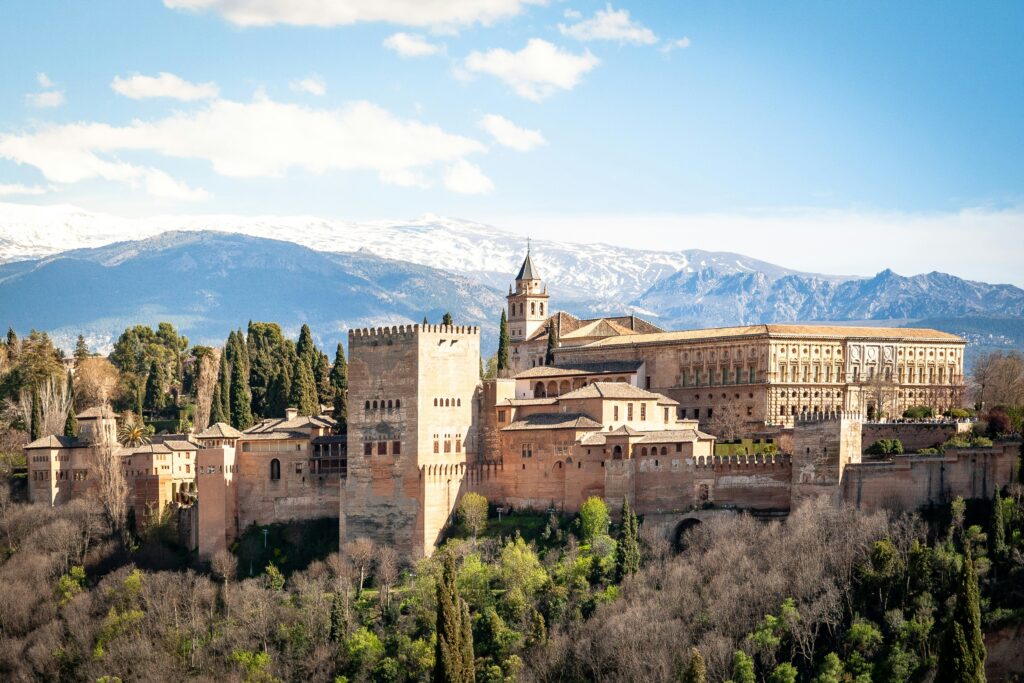
Córdoba: A Tapestry of Cultures
Another underrated gem in Andalusia. Cordoba has a population of over 320,000; in 2024, there were 920,000 domestic and 785,000 international tourists. Despite the excessive number of tourists compared to the population, Cordoba is still a calm, beautiful city. Mezquita is the star here. Many different arches were left from three different main cultures that settled here. Of course, you can’t miss the amazing neighborhoods here, too. The Jewish Quarter is great and one of the best neighborhoods to see Cordoba’s famous patios in spring. There is even a patio festival in May. However, the Viana Palace is the best place to see all kinds of different patios. There are 12 courtyards, and some patios have been family-owned since the 15th century.
Go to the Roman Bridge if you are craving a solid sunset. It may not be as pretty as it is in Granada, but it’s still magnificent. You can climb the tower of the Alcazar (not Seville’s) to get a panoramic view. Cordoba has its own local flavor, too, called salmorejo, which is basically a thicker gazpacho.
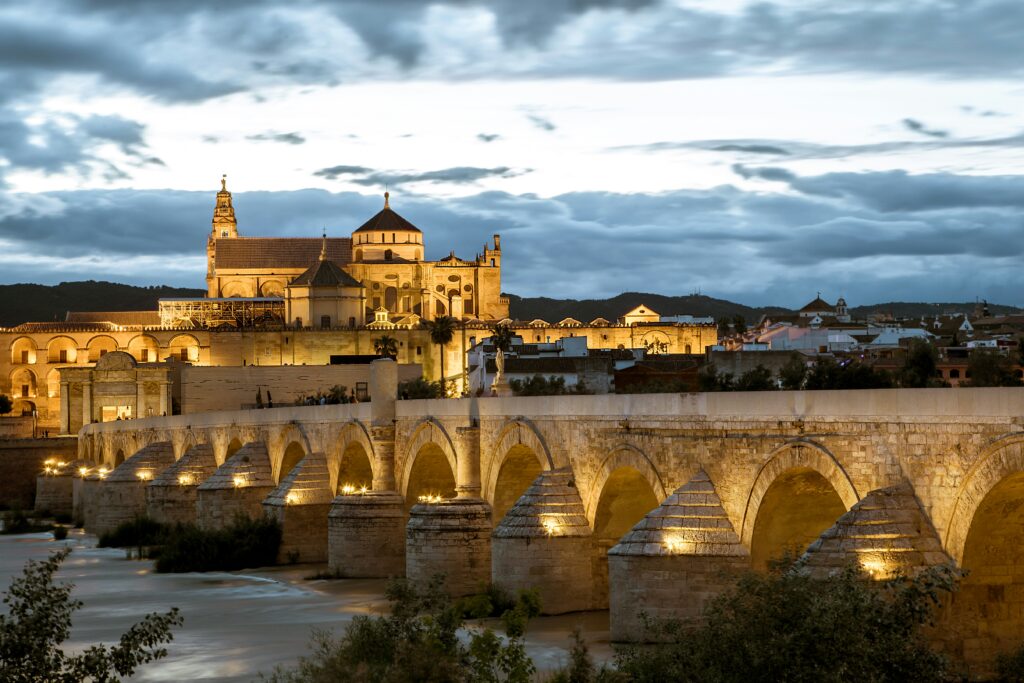
Other cities in Andalusia Worth Exploring
Major cities in Andalusia, even though they are beautiful, are limited. There’s so much more to see, especially in smaller cities. They are great places to do a quick day trip from Seville, Malaga, or any of the major cities since the transport links are good. You can travel to them by bus or train without needing a car. I’ve selected a few that I believe are worth seeing during your trip to Andalusia. There is much more besides this, but we don’t have enough space for it.
Cádiz: Oldest City in Europe with Coastal Romance
Cádiz sits on a slim strip that feels like an island, with sea on three sides and sun most of the year. The old town is compact and bright. Walk the coastal path around the fort walls, climb the cathedral tower, and visit Tavira Tower for solid views. You can do a lot in Cadiz. Cadiz is also Europe’s oldest continuously inhabited town with a coast to the Atlantic. La Caleta Beach is probably the most popular beach here, and taking a morning visit or picnicking is a must. James Bond’s Die Another Day shot some scenes here. Also, the beach is between two castles, including the star-shaped Santa Catalina Fortress. Built in 1596, it’s got direct views of the sea.
Pópulo neighbourhood has Instagram-worthy balconies that overlook Cadiz Cathedral. There are also some artisan workshops you can participate in or just peek at.
Ronda: Cliffside Beauty and Bullfighting
Ronda is one of the most interesting cities in Andalusia (personal opinion!) The entire city sits atop El Tajo Canyon, and the town is split into two by a deep gorge. As you can imagine, the walks right by the edge of the cliff are amazing. Sunrises and sunsets feel nice. Puento Nuevo connects the two sides of the city, and walking there is not for everyone, so be careful. It took 42 years to complete this bridge back in 1751. You will also find some solid viewpoints, like Cuenca Garden’s viewpoint with the Guadalevin River below. There are also these old Arab Baths here.
One of the things Ronda is famous for is bullfighting and bullrings. Ronda has Spain’s oldest bullring, Plaza de Toros. You can still find matadors training here (so, it’s active). Make sure to peek at the museum, as well. It will give you a good context of why bullfighting is popular.
If hiking is your thing, Ronda has a killer trail – the Cueva del Gato trail. You don’t find this as much in Andalusia. That’s why you should cherish it while you have it. Apart from good views, there are also natural pools that you can swim in among the limestone cliffs. If you’ve ever been to the Canary Islands, you’ll know how good swimming in these natural pools feels. At the end of the trail (close to it), there is Bodega La Sangre, wine cellars from the 18th century. It’s your reward for finishing the trail.

Jerez de la Frontera: Sherry and Horses
Contrary to the cities we talked about so far, Jerez is famous for something other than historical sights. Spain’s local drink and Andalusia’s gem when it comes to drinks, sherry was born here. You can go to different bodegas and wineries, see how sherry is made and aged, and try a lot of it. If you’re here, your first task is to tour a bodega to learn how sherry ranges from bone dry fino to deep PX.
Another thing that you must do is to catch a show at the Royal Andalusian School of Equestrian Art. Stallions perform levades at 11 AM on Tuesday shows. These trained dancers trot to Spanish guitar and their routines date back to 18th-century cavalry drills! The city’s old town is great for a slow evening and walks after a heavy dinner.
There is another Alcazar here where you can climb for views over the vineyards and sunsets. There are also gardens in the Alcazar, which are great for catching a calm break during your day. Once the sun sets, you may also find random flamenco shows there, if you are lucky. There is the Fiesta de la Buleria in September, which is about only flamenco shows. Go then if it’s your thing.
Marbella: Glamour and Golden Beaches
Marbella combines golden beaches and Michelin-starred dining experiences in one location. A small city, but it has a lot of tourist attractions. The city’s old town is filled with white streets, flowerpots, patios, and much more. You leave the old town and can take Paseo Maritimo by the beach and take a slow walk, enjoy your time, or go to Sierra Blanca for a mountain hike. Both have, of course, sea views, but one is at a higher altitude. It is one of the rare small cities that you can take as a nice base. Its location makes it easy to do quick day trips along the coast. Great place if you want beach days on your holiday. Since Marbella is a bit of a posh(ier) area, Puerto Banus is one of the marinas where you may spot celebrities and amazing superyachts. It’s cool to walk around and see who is in the city.
Jaén: Olive Oil Capital
Jaén is another place like Jerez that’s famous for something other than historical sights. The city is wrapped in olive trees that seem to stretch forever. So, as you can guess, olive oil is the real thing here. Because of this, and as it’s not as famous, it is quieter than the big hitters, which is a bonus if you like local pace. Since the main tourist attraction is olive oil, you can do more than taste or buy souvenirs. Take a visit to a working mill during the harvest season to get a tour of the mill, do a tasting, and learn about real olive trees and oil.
The city lives with nature. You can take great hikes if you wish. Drive up to Santa Catalina Castle for good views and maybe some hiking around, then stop at the Renaissance cathedral. The Ruta de los Castillos y las Batallas, with Baños de la Encina’s Burgalimar, is also a castle highlight like Santa Catalina. Sierra de Cazorla, Segura y Las Villas is the largest protected area in Spain, with waterfalls, vultures, and long valley hikes.
Almería: Desert Meets the Sea
Almería is another coastal city, but this one is a busy port city. Of course, there is also a hilltop fortress like in other cities (you can’t escape them here). The fortress, Alcazaba, oversees the water and port, so it has good views. The cathedral in the city was originally built to protect its people from pirate raids back in the day. That’s why it looks like a fortress, but it also works as a church.
Away from the city, Cabo de Gata Natural Park is a short drive away, with volcanic cliffs, salt flats, and tiny coves. Inland, the Tabernas Desert has wide skies and film sets used for classic westerns. You can move from a beach to a desert scene in under an hour, which is a rare option for a coastal city.
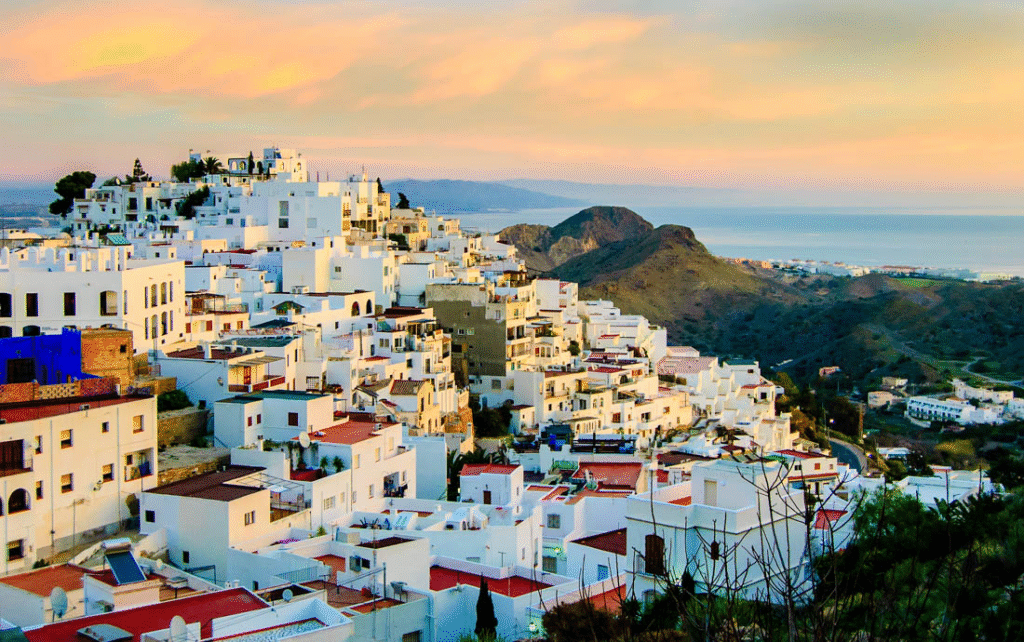
Huelva: Gateway to Doñana National Park
Huelva leans into nature and seafood. It sits near Doñana, one of Europe’s great wetlands, where you can spot birds, roam dunes, and feel far from the city in minutes. The city itself has some good beaches, like Punta Umbría or Islantilla. There is also a port here, and you can find the fresh fish or other items that come into the city via the port in several markets in the city. Prawns are the most famous fish here.
Apart from the Doñana National Park and the beaches, take a walk at Muelle del Tinto during sunset. Casa Colon is also a great place to understand Huelva’s history and its link to the Atlantic. Overall, you’ll find a much quieter, simpler, and smaller part of Andalusia in Huelva. Plan your trip around Doñana, though.
Dos Hermanas: Local Vibes Near Seville
Dos Hermanas sits just south of Seville and is part of the metropolitan area of Seville. The landscape is mostly urban and flat, and it descends into the Guadalquivir Valley. Because of this, despite a population of over 120,000, the city keeps a local rhythm. The people here mostly live off of festivals and siestas; it’s a very laid-back and chill city.
Before heading off to the notable historical sights, if possible, plan your trip around the week of the Feria de Dos Hermanas festival. In 2025, it was between 21 and 25 May. You can check the dates for 2026 online when they’re announced. Some of the most popular sights to see are the Church of the Magdalena, the Chapel of Santa Ana, and the Ruins of Orippo (one of the first settlers here).
Conclusion
Andalusia is a gold mine, with over 50 cities and many major ones with over 300,000 population. You have beaches, hiking trails, snowy mountains, history, culture, and many other things you can’t miss. Knowing the cities in Andalusia and which one offers what will give you the boost you need for your Andalusia travel guide. I hope this guide will help you better understand cities in Andalusia (at least the important ones).
Book the museums you want to see in advance, and try to go to local places for tapas, sherry, and good wine instead of tourist areas. Watch a flamenco show, walk next to the Atlantic, and visit one of the 14 UNESCO World Heritage sites along with over 1,000 tapas bars. If you can, spend as much time in Andalusia as you can by taking one of the major cities as your base. You won’t regret it.
FAQ
What’s the best time to visit Andalusia?
Spring (March-May) and fall (September-November) have nice weather and fewer crowds. It’s the perfect conditions for exploring. Summers can be hot, especially inland!
How many days should I spend in Seville?
Three days is ideal for seeing highlights like the Cathedral, Alcázar, and Triana’s flamenco scene. Add an extra day if you want deeper cultural immersion.
Is Granada worth visiting just for the Alhambra?
Absolutely! But don’t miss the Albaicín’s winding streets or Sacromonte’s cave houses. The Alhambra alone justifies the trip—book tickets early!
What’s a must-try food in Andalusia?
Tapas! Try gazpacho in Córdoba, pescaíto frito (fried fish) in Cádiz, or jamón ibérico anywhere. Pair them with local sherry in Jerez.
Can I do day trips between cities in Andalusia?
Yes! High-speed trains link Seville, Córdoba, and Málaga in under 2 hours. Ronda and Cádiz are better explored with a rental car for scenic routes.